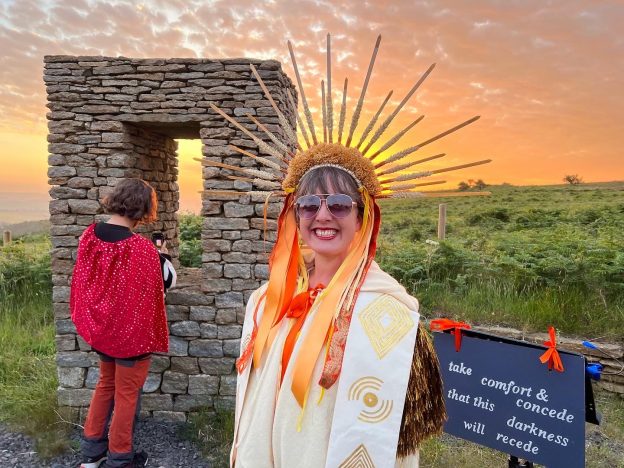Lorna Rees muses on contemporary folk performance – from And Now’s Wayfaring to Lucy Wright’s Radical Landscapes, via Apple Wassailing, Gothic Morris Dancing, and The Wicker Man
I have had quite a history with ‘folk’ without realising it. I strongly identify as being from the South-West of England. I’m part of its culture and it is part of me. I don’t think I even realised this until I travelled to other places. And so many of us partake in folk cultures without even really realising it – even my deeply secular family observed the seasonal or calendar rituals of the year, cycles which most cultures observe: a spring festival (for us, this meant Easter eggs), a mid-winter festival (for us, Christmas), and a harvest festival where we’d donate cans of spaghetti hoops into a box covered in sugar paper at school.
I grew up mainly in Dorset after moving from the slowly degrading concrete of Harlow New Town. We’d always go to the raucous, drunken and weird Wimborne Folk Festival with its huge wicker headdresses and mellifluous bearded men. We’d attend the Great Dorset Steam Fair and dance in wooden twig circles in the New Forest, for a joke (I accidentally fell pregnant directly after doing this, so I’d just say, approach a witch circle at Beltane with caution, but um, thanks to the coven for my eldest). I absolutely do not consider myself religious or witchy, I do not have a spirit animal, and I also am unwilling to have my chakras read (although I respect those who do). Contemporary British folk culture often seems to me to be either very male, and quite posh (many current folk music superstars had very expensive educations), or female yoga-new-age spirituality-based and ‘woo’, or else, well, local and vernacular and a bit more ancestral (people who live and work on land and mainly want a great excuse to get drunk at a party). But perhaps because of the dire times we’re living through, it seems that the heavily political folk revival movement of the 1950s, which itself came from the late 19th century folk movement, is now having a revival. And, because it is what artists do, there are a bunch of us mixing all of these things up and then making new things.
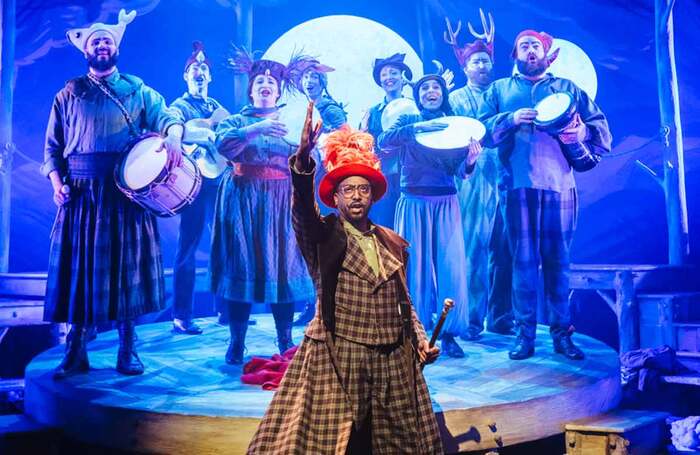
From Nell Leyshon’s stunning play Folk at Hampstead Theatre, and Little Bulb’s beautiful Wolf Witch Giant Fairy at the Royal Opera House, to the recent revival of Jez Butterworth’s Jerusalem, I can see folk is on the main-stage theatre zeitgeist. It’s also proliferated into the art world, with the landmark Radical Landscapes exhibition at Tate Liverpool which ‘explores the rural as a heartland for ideas of freedom, mysticism, experimentation and rebellion’. However, I also perceive a movement outside of these places into the landscape itself, and that’s something as an outdoor theatre maker I’m really interested in.
Of course, plenty of us UK-based outdoor makers have been consumed by folk and ritual practice for years. Welfare State drew on ideas of fire and community which are certainly deeply connected to plenty of medieval rituals. Kneehigh in Cornwall (founded in 1980 by Mike Shepherd, and later directed by Emma Rice), and breakaway site-specific outdoor company Wildworks (formed in 2005 by Sue Hill and Bill Mitchell) repeatedly drew on local myth and legend. Kneehigh’s retelling of the Cornish legend Tristan and Yseult is still one of my favourite experiences inside a theatre building.
Simon Pascoe and Caitlin Easterby of Red Earth, and Caitlin’s brother Jonny Easterby, are deeply connected to this rich vein of work in landscape. The stunningly beautiful work of outdoor art and fire specialists And Now (Mandy Dike and Ben Rigby) always feels to me primal, ancient, ritualistic and playful – in particular, the work they created for Wayfaring (produced by Activate Performing Arts) to celebrate the ancient neolithic route of the Icknield Way – which certainly used tropes you’d often see in folk ritual: natural fibres, acoustic instruments, procession, using only materials found in the landscape to make structures, as well as a hefty amount of joyfulness.
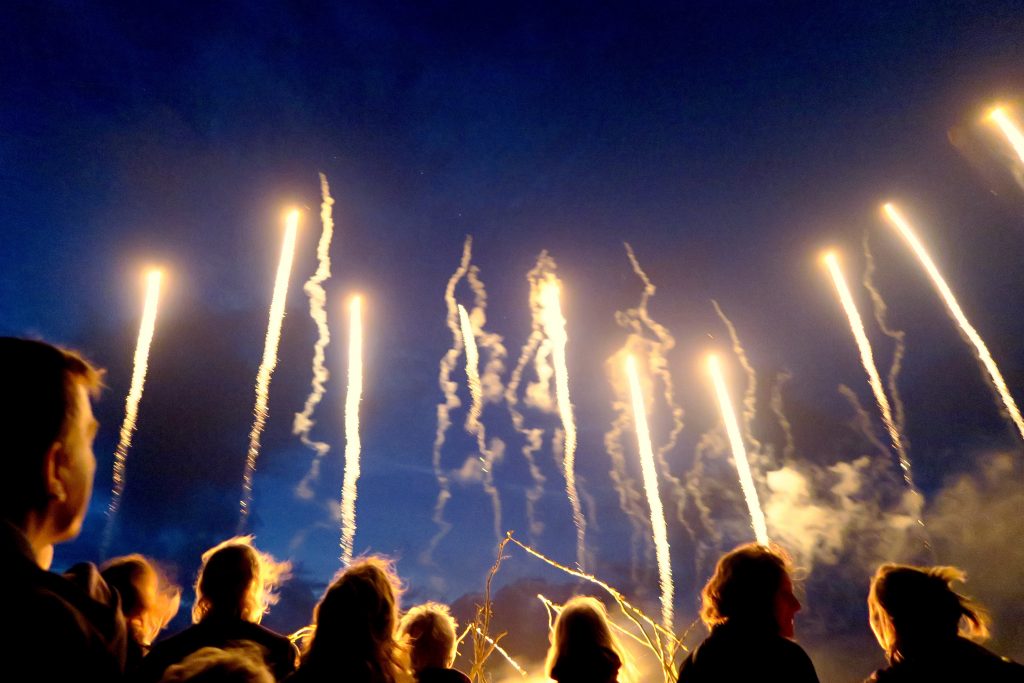
Some music festivals play directly into this folk movement, too – Green Man in Wales being one of the largest overtly connected to folk practice. I spend summers with my family trudging through fields in pursuit of standing stone circles (cheap day out) and I’ve spent a long time online watching the work of experimental Nordic neo-folk musicians Heilung, whose aesthetic and intensity feels both ridiculous and awesome – they wear accurate Bronze Age costumes and use human bones in their performances. There’s an ancient technology centre near me who put on all-night parties.The Stone Club (of which I’m a member), run by sound/visual/performance artists Lally Macbeth and Matthew Shaw, recently curated an extraordinary folk solstice performance event at the British Museum. The ‘sound system in a field’ illegal rave party culture of the 90s has grown up – and (maybe) become folk. Thousands of us want to party and connect to each other in nature, just as we humans have for millennia.
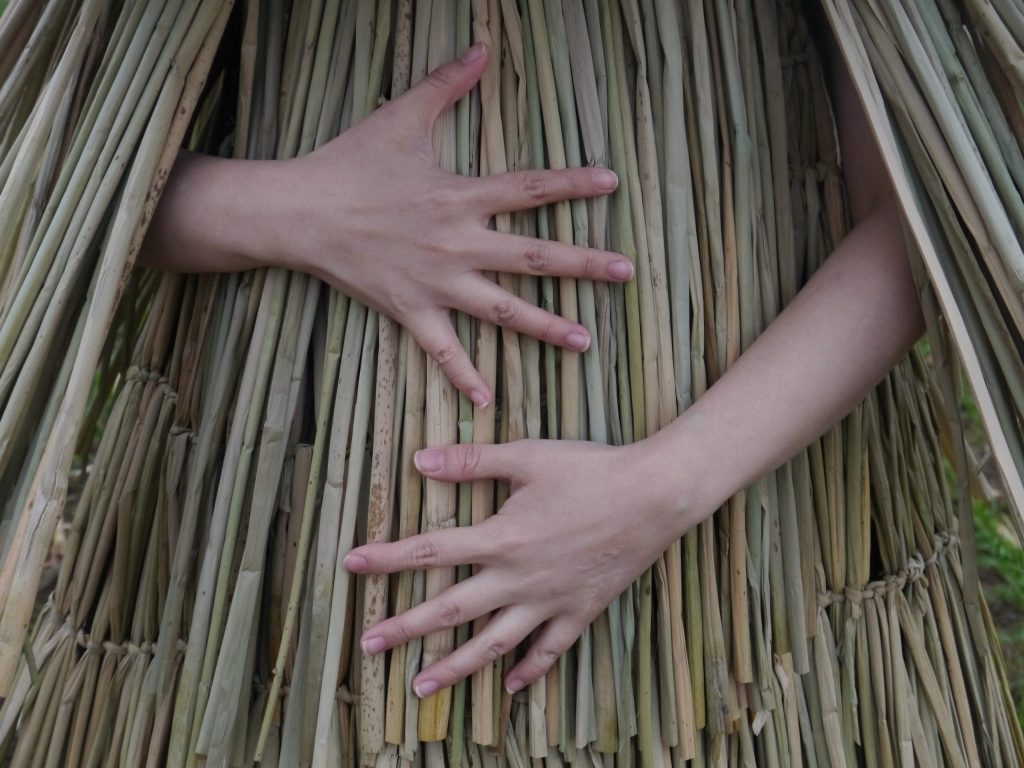
And I think there’s a new generation of performance-makers leaning into weird (and wyrd), discovering more of this stuff away from the often intimidatingly white and totally male-dominated folk clubs – and making collaborative, interactive performance about it. Companies like Bassline Circus – a company which has risen up out of the free/illegal party British and European rave scene (circus-meets-dancefloor). They recently (April 2022) collaborated with Full Tilt Aerial to create the excellent Ceres, an outdoor performance for the finale of Devizes Outdoor Celebratory Arts (DOCA) festival in Wiltshire – a show based on women, trade, local folk culture, and ritual. For me, much of this is about environmentalism, politics, being good ancestors, and having equal access to landscape: I think we should all be taught to think about ourselves as custodians of land and landscape. And for me, folk is DIY and community based and exists in self-organisation and co-creation outside of mainstream arts organisations. It is handmade and unpolished and is therefore full of energy and life and inclusivity – everybody is invited.
In 2022, there was suddenly a huge surge in the practice of Apple Wassailing. I’ve been celebrating this mid-winter festival for a few years, but this season ended up hosting three such events. And I saw friends all over the South-West getting involved. A wassail is a sort of DIY punk ritual – people dress up in green, you bash pots and pans to drive out the bad spirits/wake up the land ready for spring, feed the trees some cider and ask them nicely to bear a good harvest, sing some songs and drink. It’s about giving back to nature, recognising (and honouring) the land and having a party in the bleakest part of the year. Many friends and colleagues in outdoor arts have also seen a surge in bookings for wintertime light festivals – and this is not unconnected. People want to find community outdoors, especially in a time post-pandemic when panto seemed to be a somewhat dangerous pursuit. On our street, we created a DIY Christmas lights switch-on with homemade plywood boards being lit by a cardboard-hatted reindeer. I’ve even officiated the rising of the sun on summer solstice in a headdress made from old cable ties in my alter ego, the self-appointed High Priestess of Pop (with disco druids in attendance). For me, the deep joy of folk ritual is that it is absolutely not glossy and that we can make it up together as we go along.
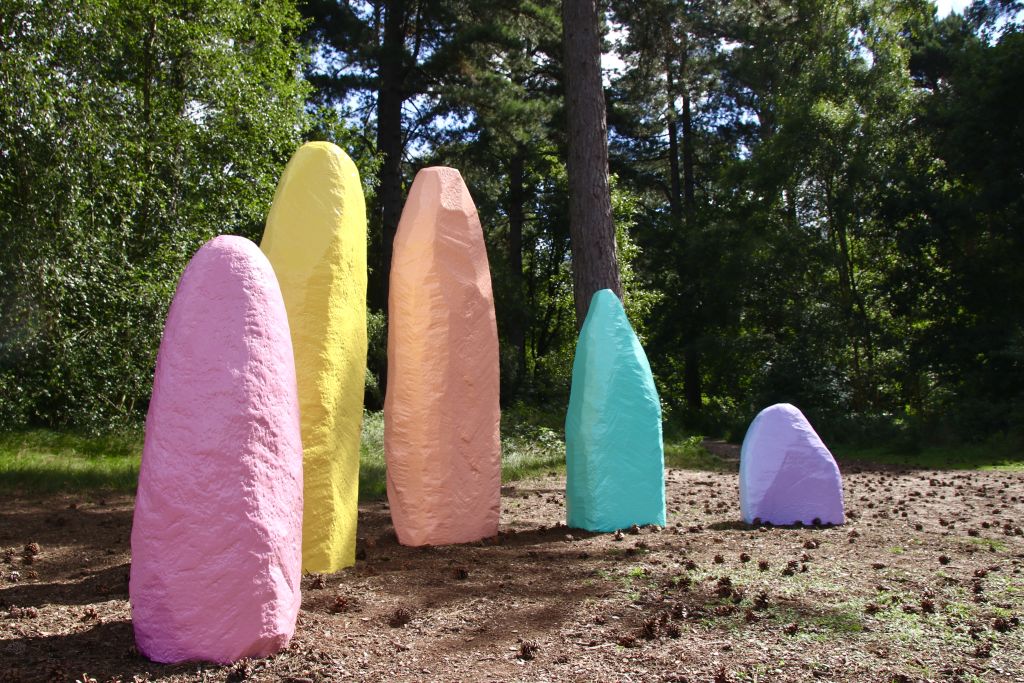
There are some key practitioners of this wave of folk practice. Seamus Carey is a musician, podcast creator, theatre-maker and ‘child of Kneehigh’. Seamus’ work is joyfully related to ancient folk practice – his show Pagan Pandemonium was filmed during lockdown and subsequently aired in the Tate St Ives. There are prominent visual artists making work about this too. Ben Edge is a beautiful painter documenting contemporary folk performance practice from The Bury Man, to Druids in Canary Wharf, to the Obby Oss of Padstow. His collaboration with the Museum of British Folk Art on a surprisingly blockbuster exhibition entitled Ritual Britain charts contemporary practice of Morris Sides and strange costumes throughout the land.
The work of contemporary folk artist Lucy Wright is deeply inspiring, her manifesta of Folk is a Feminist Issue a rallying cry. Her point that ‘as feminism is concerned with the emancipation of all beings, so folk is concerned with EVERYBODY’S right to make, take part and self-organise’ is hugely satisfying. Folk isn’t owned by anybody – that’s a patriarchal construct. For Lucy, ‘[folk] doesn’t represent a specific vernacular or style, nor a set of rustic artefacts once gathered by Victorian collectors on bicycles and promptly preserved in aspic. It’s what can happen when people, alone or together, and regardless of anything, engage in cultural practices they create for themselves’. And if folk is really for everyone then it must be decolonised too. Extraordinary female artists such as singer and musician Angeline Morrison and the broadcaster, writer and DJ Zakia Sewell are some of this generation of artists who aren’t willing to let folk not be for them.
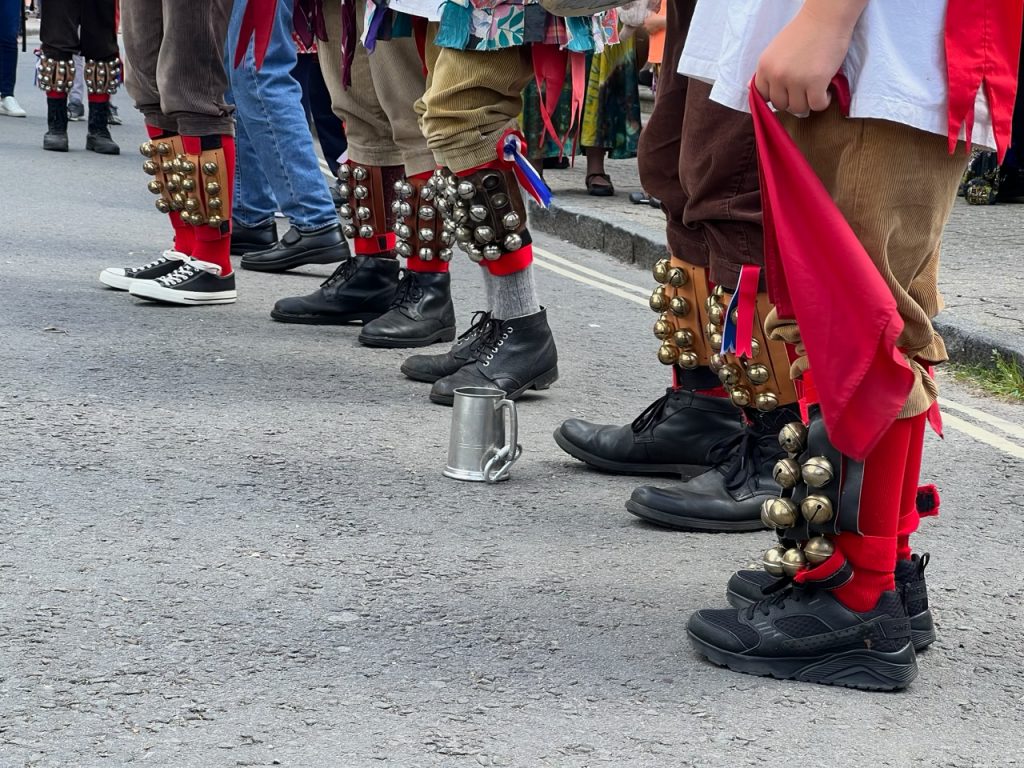
Morris Dancing must of course be mentioned. There are over 800 Morris sides in the UK. It’s a practice which dates back to the late Medieval period. On my visit to the Wimborne Folk Festival in 2022, I could see amongst the all-male sides a greater number of mixed sides and all-female sides as well as Slovakian and Bulgarian dancing groups and a good number of what I’ve taken to calling ‘Goth Morris’ sides: people like Beltane Border Morris who promise the ‘dark side of folk’. I think that in popular consciousness, folk has a real sense of weirdness about it – Edward Woodward’s burning police officer in the 1973 film The Wicker Man is a pervasive image, as are more modern horror films like Midsommer, or the creepy The Third Day which saw a striking, real time day-long film collaboration featuring Jude Law and immersive company Punchdrunk. My favourite Morris side though (and yes, I’m deep enough in to have a favourite side) are the brilliant Boss Morris, a wonderful Gloucester-based all-female side. Their costumes are glorious works of art, and their dancing fiercely accurate. They take what they do deeply seriously and their passion is compelling. They say of their work that they’re ‘as happy adapting older traditions as we are inventing new ones’, and this is something echoed frequently from the other female practitioners I’ve been speaking with.
Polly Wiseman is a theatre-maker, and artistic director of Fireraisers, who grew up in Sussex near Lewes. She told me how the Lewes Bonfire Night is more important than Christmas in her family – the wonderful anarchy of this annual event inspiring her not just to create her company but literally informing how she creates: ‘Perhaps that’s why I’ve always been more interested in events that involve the audience, rather than taking place behind a fourth wall. I set up my company to make “extraordinary theatre in unexpected places” – really because I knew 90% of the population wouldn’t willingly set foot in a theatre’.In recent years Polly has, like myself, also presided over festivities and folk rituals, creating new traditions and remaking old ones. During the second lockdown, she encouraged people to think about their experiences over the year and what they needed for the future. The key thing which emerged was that everyone felt that they’d connected more to nature during the lockdowns and that they now wanted a chance to come together in nature – to celebrate and strengthen that connection, to the land and to each other.
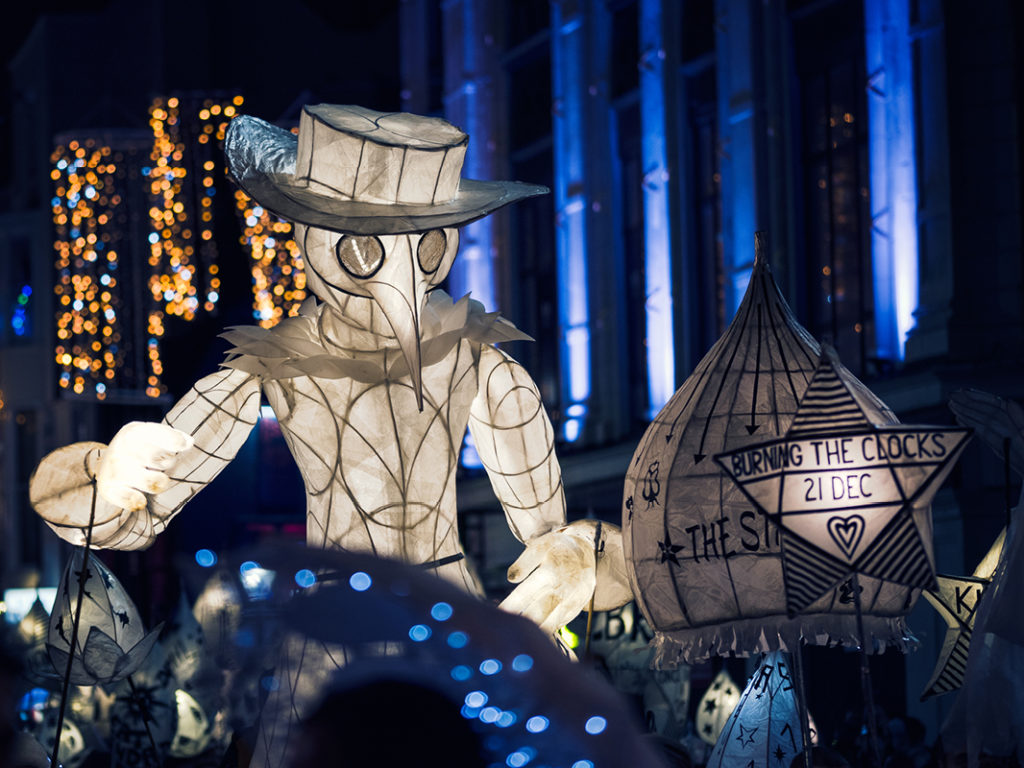
For my part, I’ve been making ‘folk’ ritual in my own community – the 100 or so homes which make up my street. I like making new rituals or drawing on old things to make new ones. I’m not particularly interested in being told if they’re right or wrong. Some older ‘custodians’ of folk don’t like this at all, and whilst I respect their community traditions, I reject this sense of ownership – I want us to make my own rituals up. Punky, suburban rituals which even after just a couple of years have become fixed events in our community calendar. Because humans like ritual and custom. There are examples of events like these which people swear are from ‘the pagan times’ which were actually only started twenty or thirty years before: Burning The Clocks on Winter Solstice was actually set up in 1994 by Brighton-based community arts organisation Same Sky. This is the pliable beauty of folk culture. It can be established but it doesn’t need to be sacred.
I have increasingly worked within the environmental movement, and I find am more and more interested in all of these intersecting folk practices. I make work for the outdoors because that’s what I’m making it about – which I think is a very ‘folk’ thing to do. After years of process, I finally made my performance work Geophonic. My huge passion for landscape and the extraordinary landscape of Dorset is deeply connected with science, and what the Earth Sciences tell us about the world. In 2021 I premiered this work – which I call a folk ritual for the rock cycle – in Symondsbury, a rural part of West Dorset, for the Inside Out Dorset Festival. Whereas most folk practices mark seasonal calendar cycles Geophonic attempts to place humans in the deep time cycles of igneous, metamorphic and sedimentary rock – replete with Scottish reels, a protest song about the exploitation of coal workers collected in the 1840s, ceremonial head pieces, and a rave. I’ve been exploring geo-futurism, audience participation, and the creation of ceremonial walking routes. The audience are participants in listening to nature and like all good folk rituals it’s also a bit silly. Because the key thing with folk is that it’s often about a community of place. It can knit us together as people with a shared local identity. It can reflect us back to ourselves in comforting ways but it can also makes us feel weird and on edge or connect us to something older and intangible – ancient landscapes, farming, people. That folk is in a resurgence right now is not coincidence. And I’m in, feet first, with bells on.
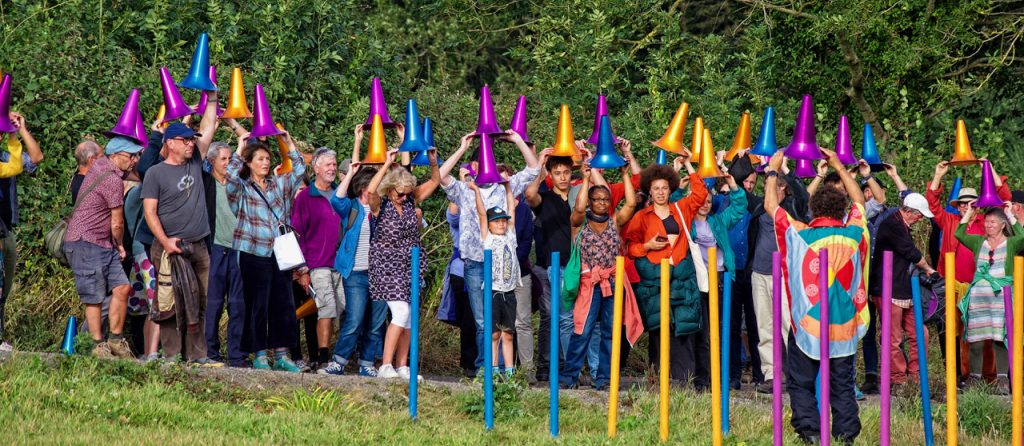
Image credit, featured image top: High Priestess of Pop Lorna Rees in action, accompanied by a Disco Druid. Photo courtesy of the artist.
Quotes from Lucy Wright’s Manifesta taken from her website: https://www.folkisfeminist.com/
All other direct quotes taken from interviews conducted by Lorna Rees.
Lorna Rees is a live artist who makes innovative, cross-artform work for the outdoors. She tours nationally and internationally with the company she co-founded, Gobbledegook Theatre, and her work is frequently inspired by Earth Sciences, heritage and the environment. Lorna is associate artist for Inside Out Dorset Festival, and she is on the board of Outdoor Arts UK.
Lorna Rees took part in the Total Theatre Artists as Writers programme 2021-2022.
Twitter @thegobbledegook
Instagram @gobbledegooktheatre

